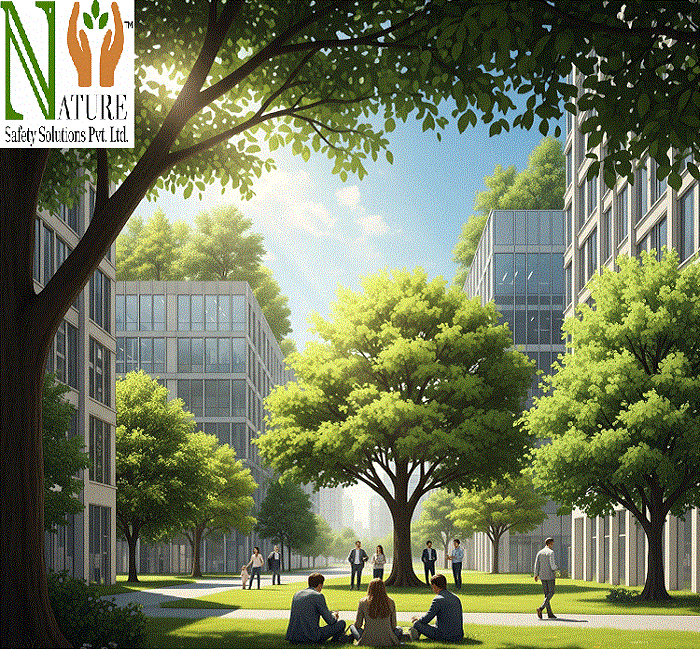Sustainability is now a key goal for many businesses. Corporate campuses are being redesigned to include more green spaces. One of the best ways to do this is through urban forestry. This means planting and taking care of trees and plants in and around office areas. Trees do more than just make the space look good.
They help clean the air and cool the surroundings. They also support the health and well-being of employees. Urban forestry shows that a company cares about the environment and social responsibility. It is a smart and simple way to create a better, greener workplace.

Environmental Benefits
Urban forests play a critical role in reducing the environmental footprint of corporate campuses. Trees act as natural air purifiers by absorbing pollutants such as carbon dioxide, sulfur dioxide, and nitrogen oxides. A mature tree can absorb up to 48 pounds of carbon dioxide per year, making large-scale tree planting an effective strategy for carbon offsetting.
Trees also help regulate temperature by providing shade and releasing moisture through transpiration. This can significantly reduce the urban heat island effect and decrease energy use in nearby buildings by lowering the need for air conditioning.
Furthermore, urban forestry supports stormwater management. Tree roots enhance soil permeability, allowing rainwater to filter into the ground, which reduces surface runoff, prevents flooding, and improves groundwater quality.
Health and Well-Being
Corporate campuses that include green spaces contribute to healthier and happier employees. Numerous studies show that access to nature can lower stress levels, improve mood, and increase overall mental well-being. Walking paths, gardens, and tree-shaded rest areas offer employees places to unwind and recharge during their workday.
Green spaces also promote physical activity. Employees are more likely to walk, exercise, or simply spend time outdoors when nature is easily accessible. This can lead to reduced absenteeism, higher energy levels, and greater job satisfaction.
In addition, exposure to natural environments has been linked to improved concentration and productivity. Green surroundings can enhance creativity and problem-solving, making employees more effective in their roles.
Corporate Sustainability and Responsibility
Urban forestry aligns closely with corporate sustainability goals. Planting and maintaining trees helps companies reduce their carbon emissions, improve energy efficiency, and support environmental stewardship.
Many green campuses also seek certifications such as LEED (Leadership in Energy and Environmental Design) or WELL Building Standard, which recognize buildings and landscapes that prioritize sustainability and occupant health. These certifications can enhance a company’s reputation and serve as tangible proof of its commitment to environmental responsibility.
Moreover, urban forests support biodiversity by creating habitats for birds, insects, and other wildlife. Incorporating native plant species helps preserve regional ecosystems and contributes to a more resilient and balanced environment.
Economic Advantages
While establishing and maintaining green spaces requires investment, the long-term economic benefits often outweigh the costs. Trees can reduce heating and cooling expenses by naturally regulating building temperatures. Native and drought-resistant plants also require less maintenance, water, and fertilizer, leading to ongoing cost savings.
Well-designed landscapes can increase property values and make corporate campuses more attractive to employees, clients, and investors. Green campuses are often seen as more prestigious, forward-thinking, and desirable places to work.
Strengthening Brand and Culture
A corporate campus that integrates urban forestry reflects a strong environmental ethic. It communicates to stakeholders—employees, customers, investors, and the public—that the company values sustainability and the well-being of its people.
Such spaces also contribute to a positive work culture. Employees take pride in working in beautiful, eco-conscious environments. Trees and greenery symbolize growth, stability, and renewal—qualities that can inspire employees and enhance company identity.
Green spaces can also be used to host community and employee engagement activities, such as tree-planting events, outdoor meetings, and wellness programs. These initiatives support teamwork, build community connections, and reinforce a culture of responsibility.
Read also:-
